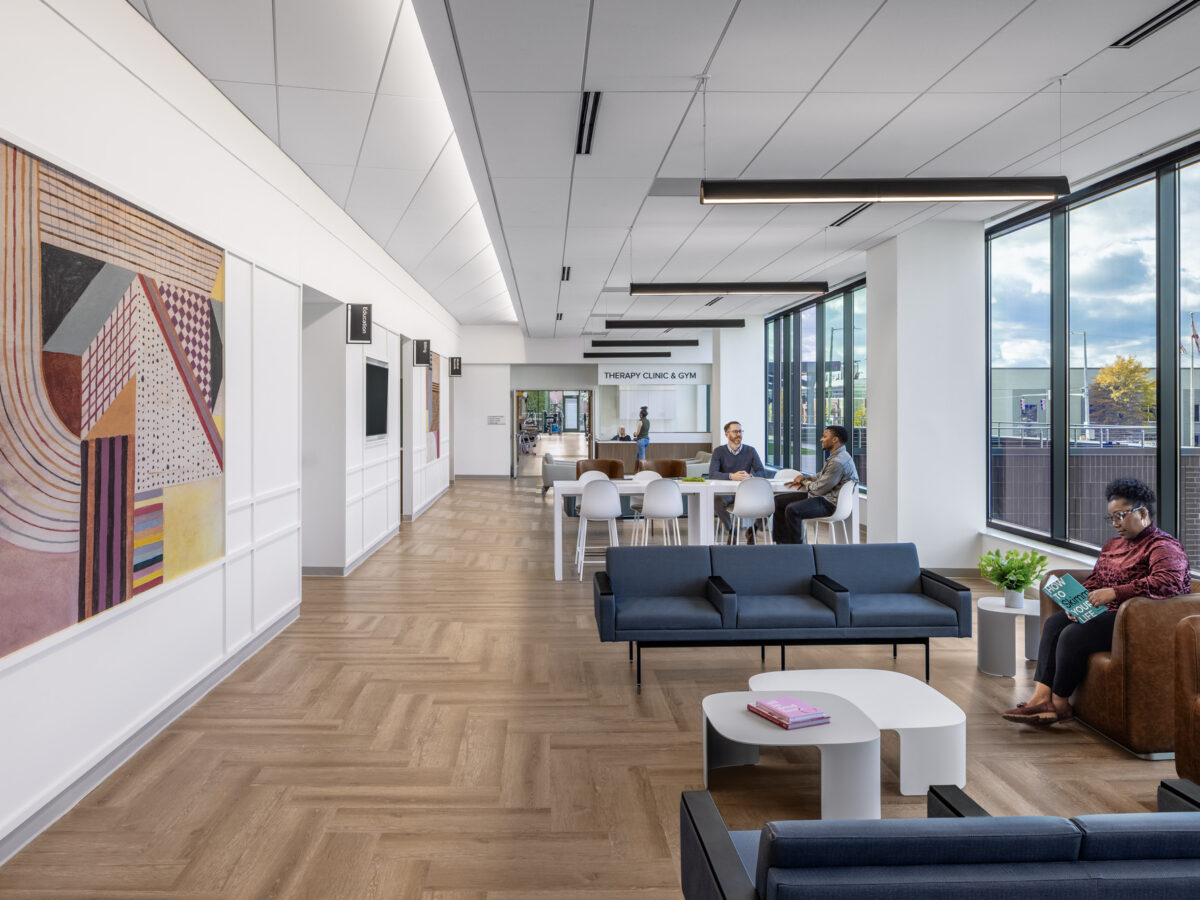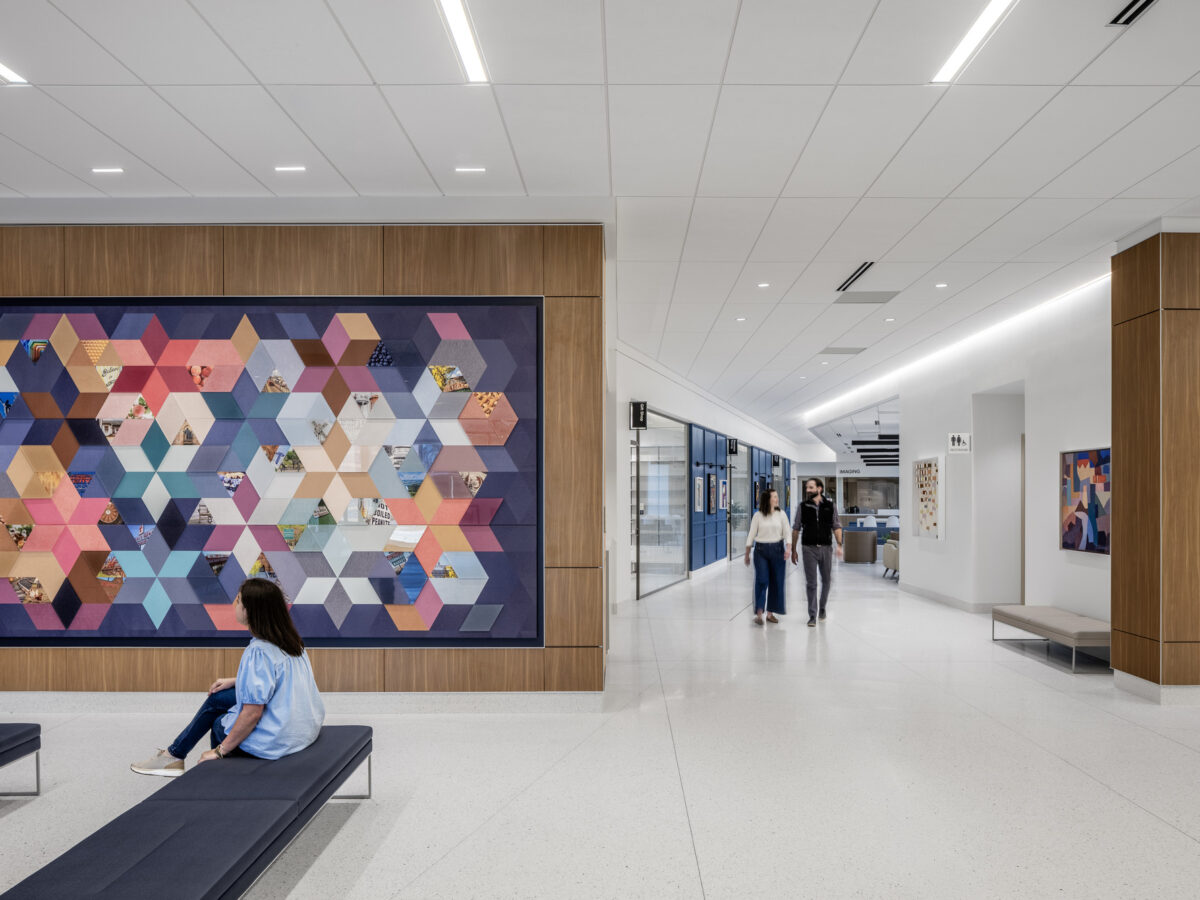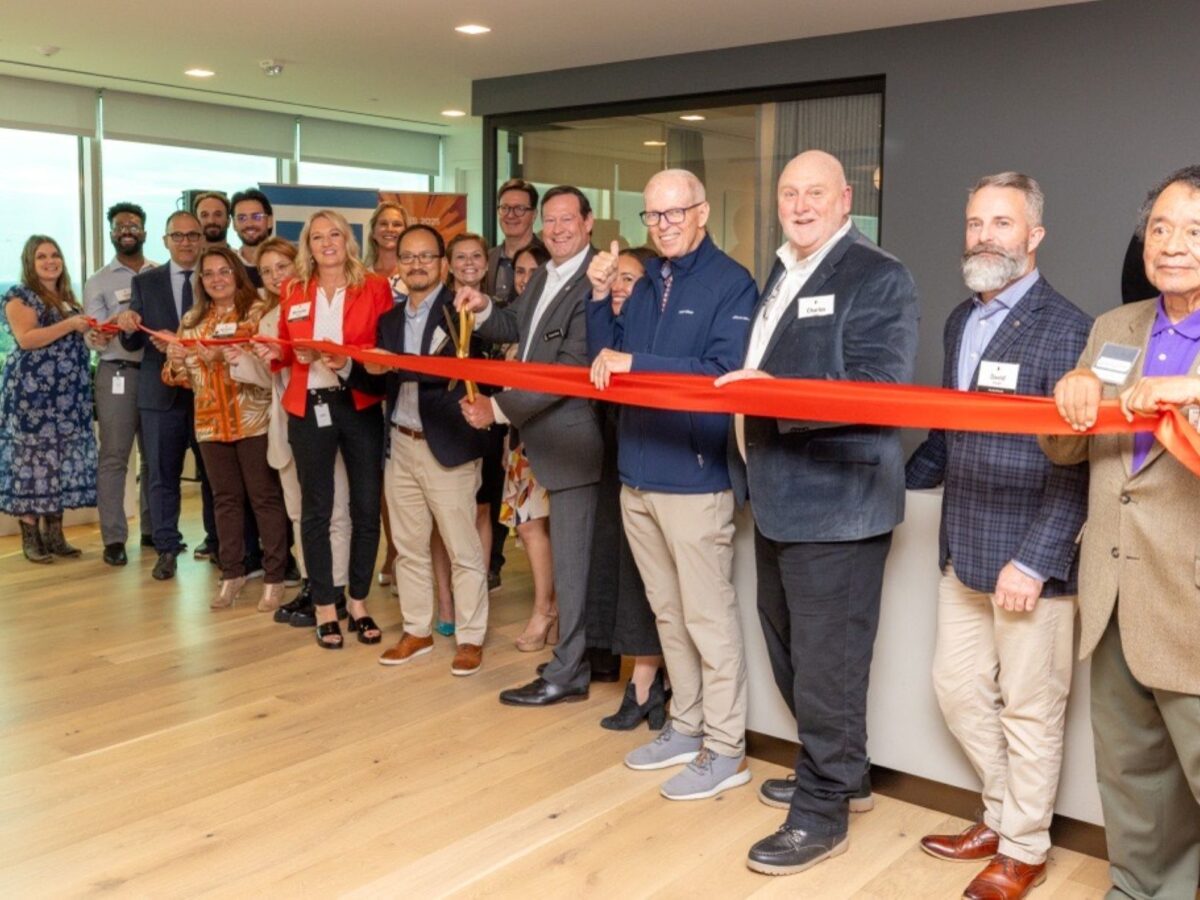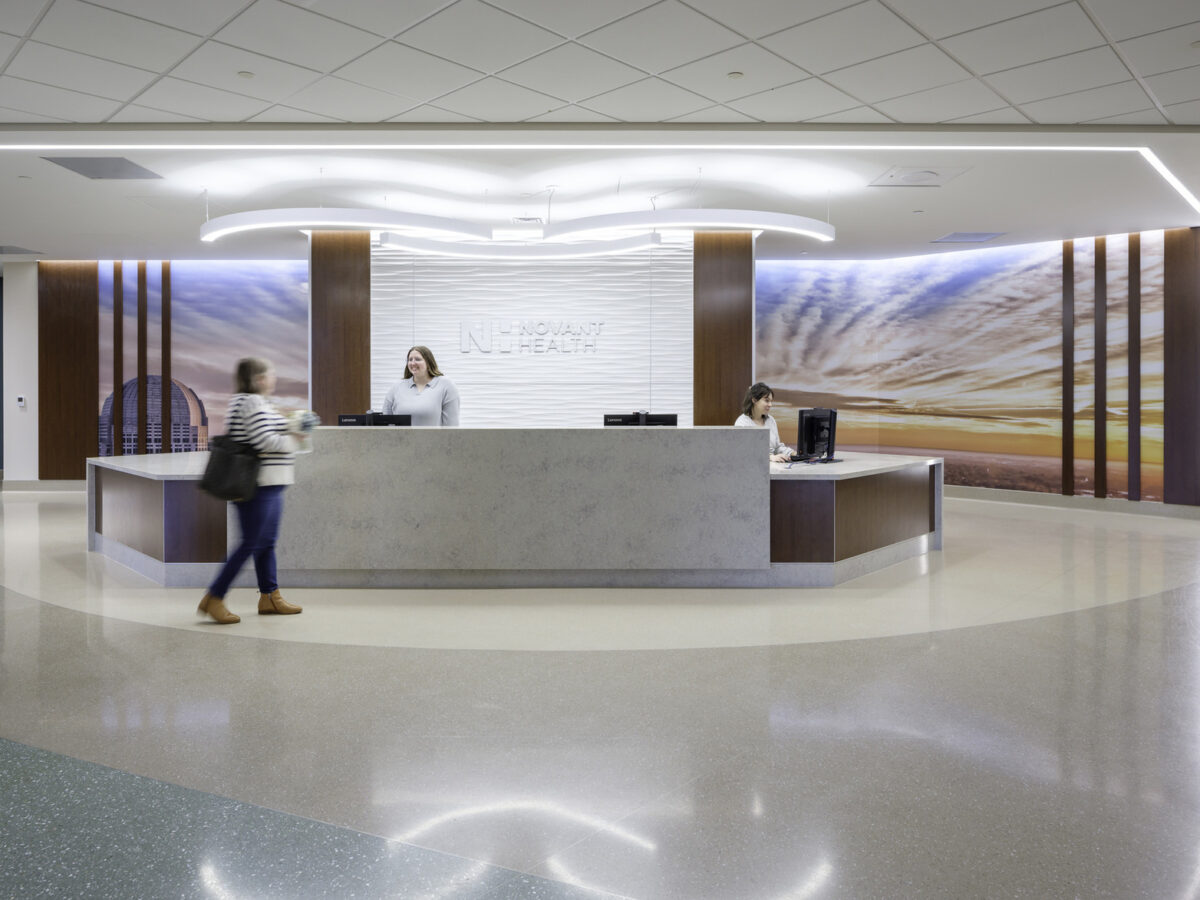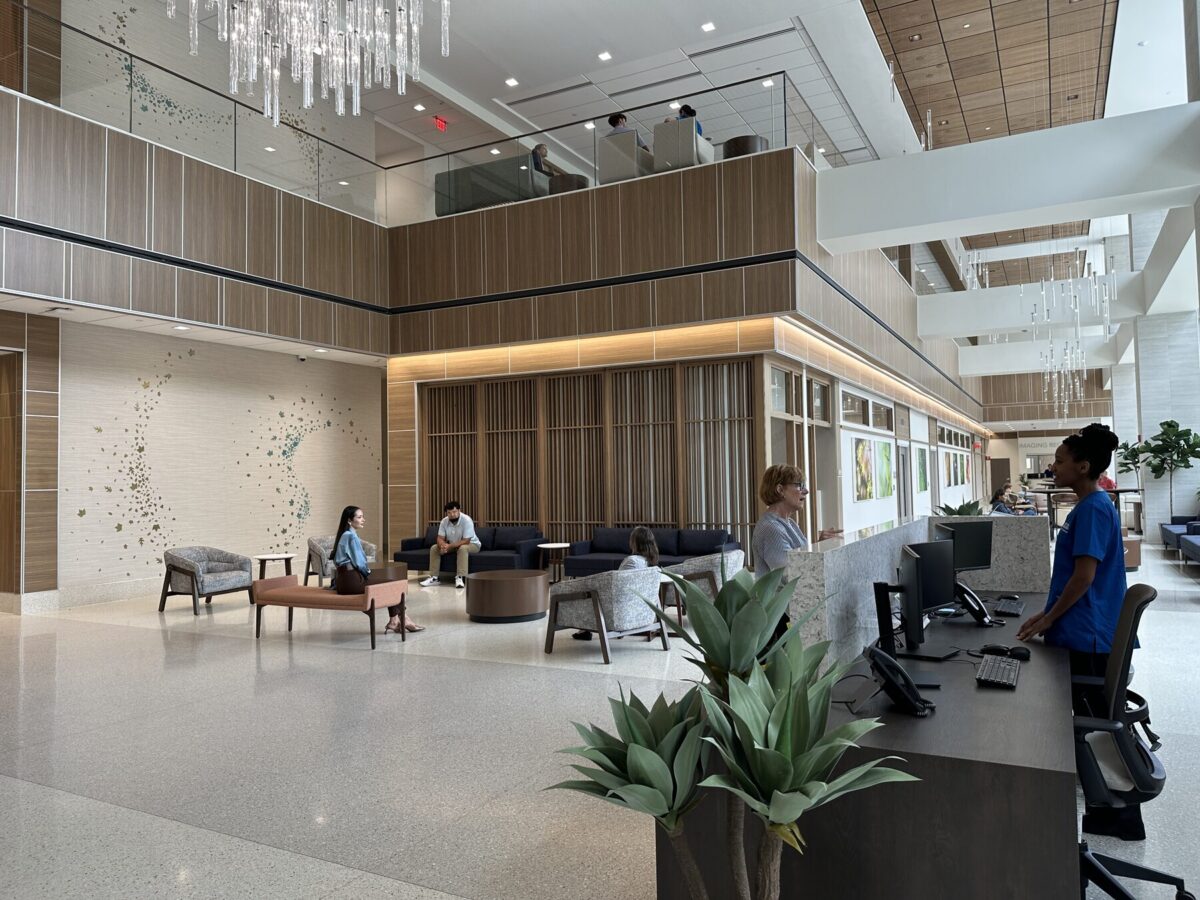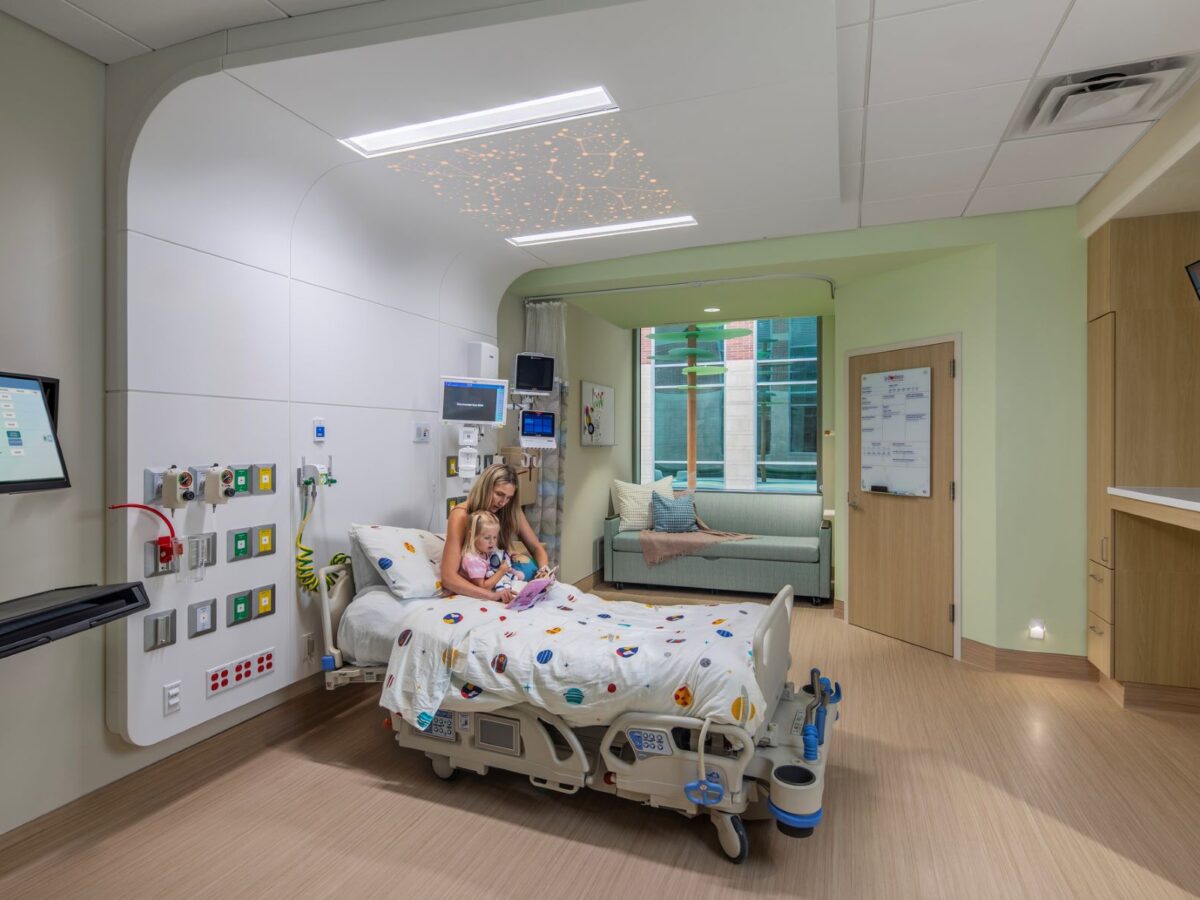“Loving a nurse ain’t easy, and being one is worse!” That was a quote from a participant in one of our nursing-based focus groups this summer. Essential team members within the healthcare system, nurses are leaving the profession in droves. The culprit? Burnout.
Symptoms include physical, mental and emotional exhaustion, job dissatisfaction, depression, and, for some, PTSD. Increased stress due to the COVID-19 pandemic has only exacerbated this occupational burnout.
The issue has become so prevalent that the National Academy of Medicine launched an “Action Collaborative on Clinician Well-Being and Resilience” calling for help, citing the critical link between clinician well-being and safe, high-quality patient care.
Research suggests that the built environment may help reduce burnout, and our research team is currently in the midst of a two-year study evaluating the impact of UF Health North’s new Jacksonville facility on the quality of nurse breaks.
As part of the study, Penny Houchens and Carolyn Blake, senior interior designers in Gresham Smith’s Healthcare market, designed break rooms using evidence-based design principles. They also cited specific attributes that should be present in healthcare facility break areas in order to provide quality and restorative rest for nurses.
Penny and Carolyn are now part of the research team studying the impact of their own designs. Our team’s goal? To find out if the nurses take breaks, where the breaks are taken on campus, and to identify preferred environmental elements influencing the quality of the break.
We hope to apply what we learn from the study to future designs so we can improve the quality of the environment, reduce burnout, and help our clients mitigate the $64,000 turnover cost per nurse.
The study aligns well with Gresham Smith’s current Innovation initiative (an internal incubator program that encourages innovative and creative ideas from project teams across our firm) in that it’s a team-based effort using digital tools created by in-house team members in an effort to push the envelope in research innovations; expanding our services and improving our design.
In this post, I share how the study works, the innovative technology involved, and some implications for practice.
The Anatomy of a Study
The study’s timeline is broken into two main parts—the baseline phase and the intervention phase. Data is currently being collected using online surveys, design thinking sessions, staffing data and behavior mapping. Simply put, it’s a systematic way of observing and collecting user data within the built environment.
When the behavior-mapping phase took place, the entire research team was on-site at UF Health North at different time intervals for one week. The time intervals—morning, afternoon, evening and overnight—were selected based on conversations with the facility’s nursing managers and the associate vice president of nursing.
Along with Penny, Carolyn and myself, our team includes UF Health North’s AVP of Nursing and our colleagues from Steelcase Health.
We utilized a team manual with predetermined walking routes that extended from the first floor of the facility to the fifth floor. This was done for consistency to make sure we walked the same route each time.
We also introduced a digital behavior mapping tool “BMapIt” developed by Maria Sanchez, a Healthcare interior designer at Gresham Smith, and Sebastian Restrepo, a software engineer with an Internet of Things (IoT) background.
The cloud-based tool allowed the research team to map anonymous field observations of nurses within the building during breaks and annotates behavior descriptions for further study.
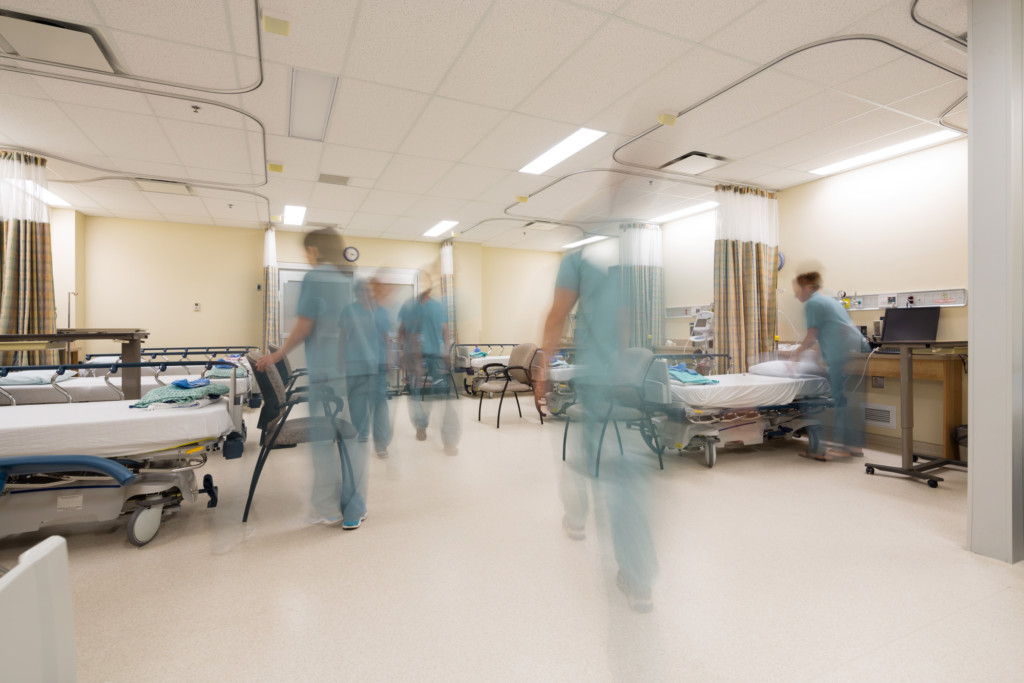
Walking the Walk: The Story Behind Our Behavior Mapping Technology
It’s interesting to note that BMapIt was originally developed for Maria’s master’s thesis at the University of Florida, and that our research team collaborated with Maria and Sebastian on revisions to customize it to our study.
As a web-based digital tool, BMapIt is accessible on smartphones, and is compatible with Google Maps, which enabled us to upload floor plans for the facility.
Each member of the research team is assigned a day and time to conduct what we refer to as a “behavior walk,” and follows the same path through the building, dropping a pin within the floor plans when a nurse is seen on a break. We are then able to annotate attributes for behavior. For example: “Nurse is sitting in the café looking at his phone.”
Once the route is complete, the software automatically generates heat maps based on the locations and the time of day, and the data exports as a CSV file for further analysis and data visualization.
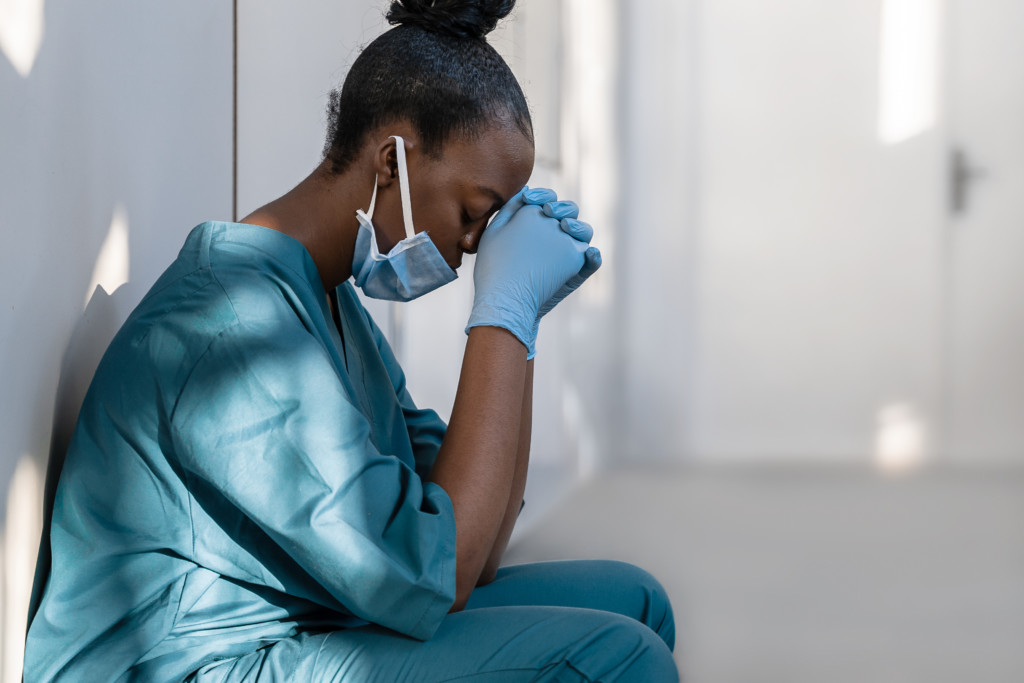
Gimme a Break: Implications for Practice
To date, data collection is nearly complete and we will be presenting the findings during an upcoming webinar for the Center for Health Design. We plan to publish the results as well.
Our initial findings revealed that nurses don’t often take breaks. When they do, it’s mainly a restroom break or to eat quickly so they can return to their patients. This seems to result from a longstanding culture within the nursing community at large that dissuades breaks unless absolutely necessary, among other factors.
The next phase of our two-year study involves organizational intervention, in which the head of nursing staff will encourage nurses to take breaks, and affirm that the organization supports respite breaks. At staffing meetings, the organization will highlight which spaces are available for breaks within the new facility.
Another interesting part of this study involves infrared sensors placed within the furniture of two break rooms on the fourth and fifth floors of UF Health North to measure how long a nurse takes a break and which pieces of furniture get used most often.
These sensors, along with de-identified card reader access to the room, will address our goal of identifying preferred environmental elements influencing the quality of the break. We anticipate gaining helpful data from this upcoming step in our study.

What Goes Around, Comes Around
Working as part of a collaborative group that utilizes the various strengths of its team members for a research project is crucial to improving design, as well as maintaining great client relationships and understanding the impact of a design on end users.
To that point, this innovative study has been an excellent collective effort between our firm and members of the nursing profession. It is also a privilege to be teamed with a client like UF Health North that is so energized, interested in, and eager to contribute to evidence-based design research.
At the end of the day, it’s fascinating to study the break habits of nursing staff and to be a part of something that we hope will improve the quality of nurses’ work lives. And let’s face it, taking care of these caregivers by improving the environment provided to them, especially in the age of COVID-19, could ultimately result in better care for patients.



